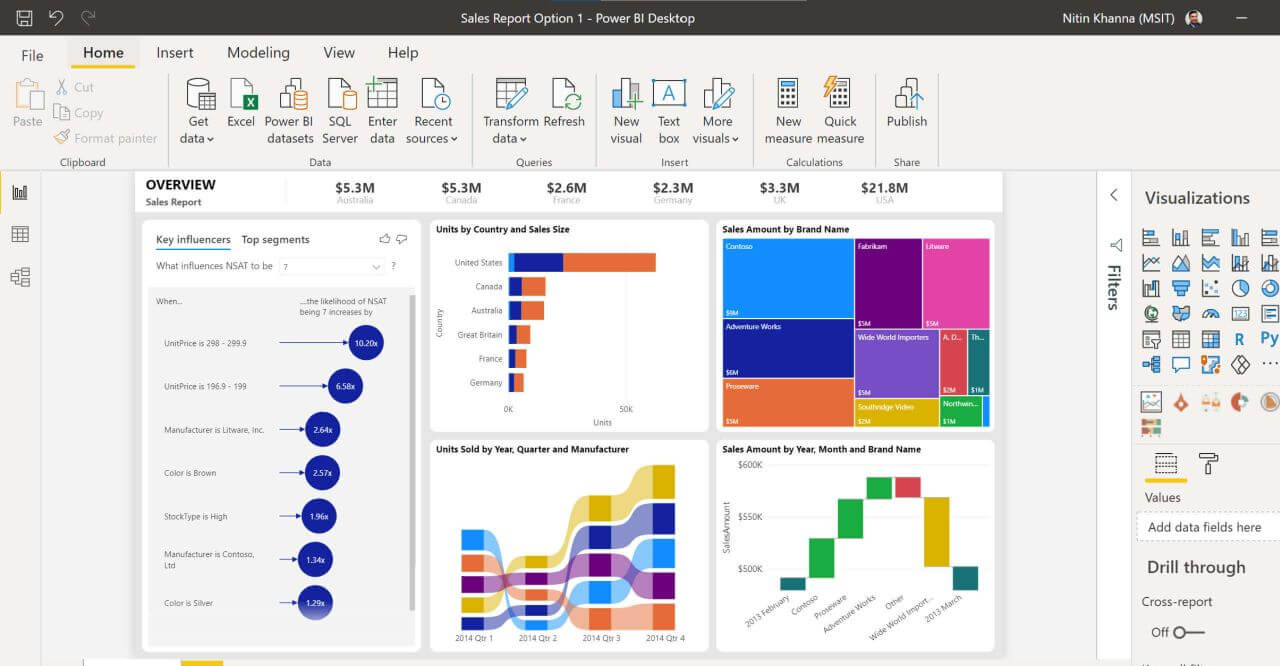On 18 August 2022, insightsoftware hosted a webinar for its customers which covered the top 10 best practices for reporting in Microsoft Dynamics.
Presented by Bryan Reed, a Channel Account Manager for insightsoftware, the webinar covered tips such as knowing what the target audience needs, to making the best use of insightsoftware’s reporting tools – Jet Reports and Jet Analytics.
As an award-winning Microsoft Dynamics partner in Singapore, as well as an insightsoftware Gold Partner, we at AFON have had the opportunity to sit in on the webinar, and bring some of the highlights to you.
Let’s take a look at the biggest highlights of the insightsoftware webinar, “Top 10 Best Practices For Microsoft Dynamics Reporting.
Identify The Needs Of Your Audience
%20(1)%20(1).jpg?width=1000&name=shutterstock_1047942373_1920_compressed%20(2)%20(1)%20(1).jpg)
The very first best practice that the webinar covered is to find out what’s most important to your target audience, so you can make a report that meets their needs.
To do that, they recommend having quick conversations with the people who would be the intended end users for your reports, to find out how they will be using them.
It also emphasised that you must ask the correct series of questions, failing which you might not gain a complete understanding of what details should be included in your reports.
If you’re not starting a new report from scratch, but rather coming up with a new version of an existing report, it’s also recommended that you ask what about the current version of the report can be mproved upon to make the data it displays easier for the end users to work with.
Another way you could get feedback is to watch how your end users interact with existing reports, and use what you’ve learned to think about how you could redesign the interface of the new report to create a smoother workflow for your end users.
Create A Report Mock-up
%20(1)%20(1).jpg?width=1000&name=shutterstock_223550878_1920_compressed%20(4)%20(1)%20(1).jpg)
The next step would be to create a mock-up of your report, as a foundation to help you build the real thing when the time comes.
To begin the design phase for your report, you should create a simple design in Microsoft Excel. This will help you visualize and situate key components of your report in a logical and usable layout for your purposes.
In the process, you should also keep your target audience of end users in mind. This involves selecting components, charts and filters which would be interesting and useful for their purposes.
Once you have completed the mock-up of your report, you should then show it to your target audience. This will give you the feedback you need to further tweak the layout until it fully meets their needs.
Take Advantage Of Data Analysis And Visualisation Tools
%20(1)%20(1).jpg?width=1000&name=shutterstock_340643216_1920_compressed%20(3)%20(1)%20(1).jpg)
Thanks to continual years of updates from Microsoft, Excel has acquired a number of tools over time which you can exploit to introduce more interactivity in your reports.
For example, report filters are a useful tool for sorting data. Including them in your reports can help your target audience uncover the trends indicated by the data more quickly and easily than before.
Another tool introduced with recent updates to Excel are Sparklines, which enable you to create tiny, colourful charts within a worksheet cell. This makes it easier for your target audience to visualize data at a small scale.
One of the more well-known Excel tools for data analysis and visualisation, however, has to be PivotTables. They can single-handedly transform what would otherwise be a static report, into one which is more dynamic and useful for your end users.
That’s because using PivotTables correctly can allow you to summarise large sets of data quickly and easily. This allows your end users to interact with PivotTables in order to conduct simply data analysis, and uncover new actionable insights.
Tune For Performance
%20(1)%20(1).jpg?width=1000&name=shutterstock_699112366_1920_compressed%20(2)%20(1)%20(1).jpg)
Being able to create reports easily and quickly is a boon for your reporting needs, of course. However, you should also keep report performance in mind when designing your reports.
Depending on how you design your report, the lookup functions you use in it can take a long time to calculate and display the results you need. This would only cause unnecessary delays for the end users of your reports.
There are a few tricks you can use to improve the performance of your reports. For one, if you use the SORT function to sort selected data, you should be able to achieve a performance increase.
Another trick you can use is to change the “MATCH” type on a lookup function to approximate, as opposed to exact.
If you’ve used the above two tricks and are still facing slow performance from your reports, try using the MATCH and INDEX functions instead of VLOOKUP and HLOOKUP.
Use Jet Reports Or Jet Analytics To Distribute Your Reports
%20(1)%20(1).webp?width=1000&name=jet-reports-feature-2_2_%20(2)%20(1)%20(1).webp)
There are many ways you can distribute your reports once you’ve generated them. Some of these include printing them out, sending them through email, or uploading it to SharePoint.
However, a more efficient way of going about it is to use the scheduling features on reporting tools such as Jet Reports and Jet Analytics.
Not only will the scheduling features on either of the Jet solutions automatically distribute your reports to the intended recipients, it’ll also automatically refresh these reports with up-to-the-minute data to ensure they always have the latest information at hand.
You can also use different report formats for different recipients both within and outside of your business, so that each recipient gains access to the data you want them to have.
The Best Practices Makes Reporting On Business Central More Efficient Than Ever
What we’ve covered are some of the highlights of insightsoftware’s webinar, and there’s more to it if you’re interested.
If you’ve missed the webinar or would like the chance to find out all of the 10 best practices it covered, you can access the webinar-on-demand here.
But if you’d rather read about it instead of watching a video, insightsoftware has also offered a PDF file which covers the same points in the webinar.
Click on the image below to download it, and find out how you can make use of these best practices to make your reporting more efficient than ever!



